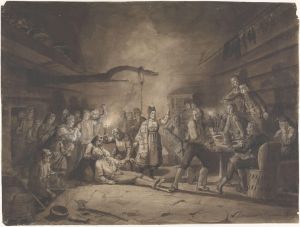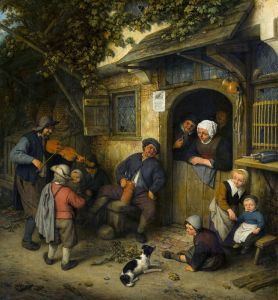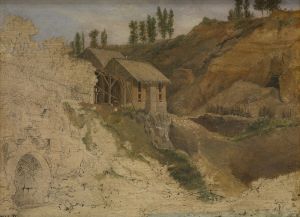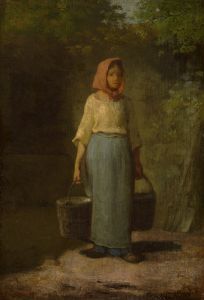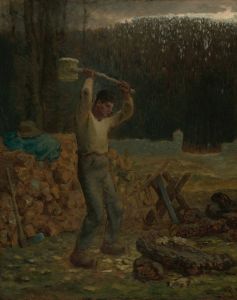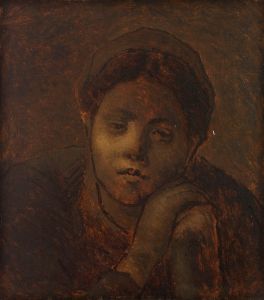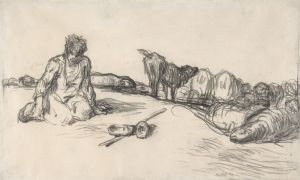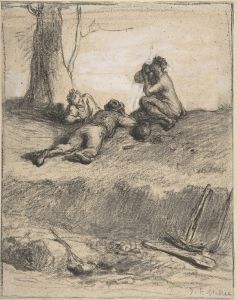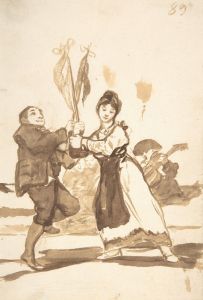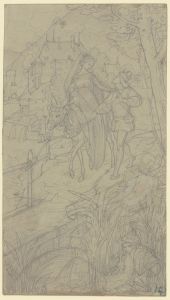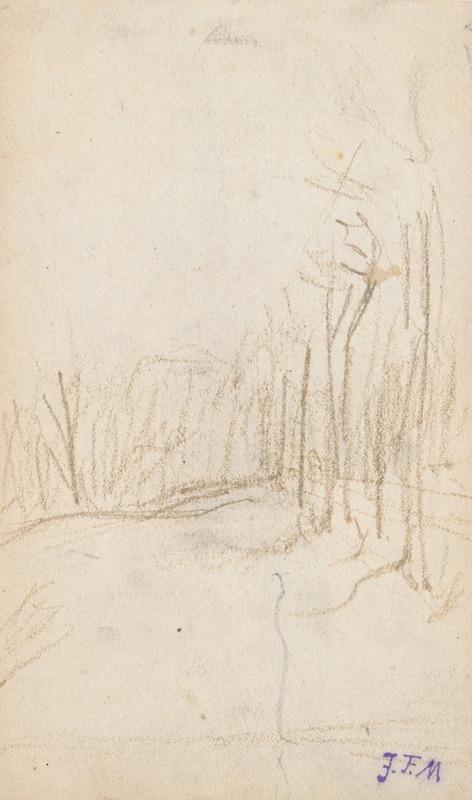
Woodland Clearing
A hand-painted replica of Jean-François Millet’s masterpiece Woodland Clearing, meticulously crafted by professional artists to capture the true essence of the original. Each piece is created with museum-quality canvas and rare mineral pigments, carefully painted by experienced artists with delicate brushstrokes and rich, layered colors to perfectly recreate the texture of the original artwork. Unlike machine-printed reproductions, this hand-painted version brings the painting to life, infused with the artist’s emotions and skill in every stroke. Whether for personal collection or home decoration, it instantly elevates the artistic atmosphere of any space.
Jean-François Millet, a prominent French painter and one of the founders of the Barbizon School, is renowned for his depictions of peasant life and rural landscapes. His painting "Woodland Clearing" is a testament to his ability to capture the essence of rural France during the 19th century. Although not as widely discussed as some of his other works, "Woodland Clearing" reflects Millet's deep connection to the natural world and his interest in the lives of ordinary people.
Millet was born in 1814 in the village of Gruchy, Normandy, into a family of farmers. This rural upbringing had a profound influence on his artistic vision, as he often drew inspiration from the landscapes and people he grew up with. In the 1840s, Millet moved to Paris to pursue his artistic career, but he eventually settled in Barbizon, a village near the Forest of Fontainebleau. It was here that he became associated with the Barbizon School, a group of painters who focused on naturalistic representations of rural life and landscapes.
"Woodland Clearing" is characteristic of Millet's style, which often features earthy tones and a focus on light and shadow to create depth and atmosphere. The painting likely depicts a scene from the Forest of Fontainebleau, a popular subject for Barbizon artists due to its diverse and picturesque landscapes. Millet's use of light in "Woodland Clearing" is particularly noteworthy, as it highlights the textures of the trees and the forest floor, creating a sense of tranquility and harmony with nature.
Millet's work is often associated with Realism, a movement that emerged in the mid-19th century as a reaction against the idealized subjects of Romanticism. Realist artists sought to portray everyday life and ordinary people with honesty and accuracy. In "Woodland Clearing," Millet's attention to detail and his focus on a simple, unembellished scene reflect these Realist principles. The painting does not romanticize the landscape but instead presents it as it is, inviting viewers to appreciate the beauty in the mundane.
Throughout his career, Millet faced both praise and criticism for his focus on rural subjects. Some contemporaries admired his dedication to depicting the lives of peasants and the natural world, while others criticized him for what they perceived as a lack of sophistication. Despite this, Millet's work has had a lasting impact on the art world, influencing later artists such as Vincent van Gogh and Claude Monet.
"Woodland Clearing" exemplifies Millet's ability to convey the quiet dignity of rural life. His paintings often evoke a sense of nostalgia and respect for the land and those who work it. By focusing on simple, everyday scenes, Millet encourages viewers to find beauty in the ordinary and to consider the relationship between humanity and nature.
Today, Jean-François Millet is remembered as a pioneering figure in the Realist movement and a master of rural landscape painting. His works, including "Woodland Clearing," continue to be celebrated for their emotional depth and technical skill. Through his art, Millet offers a window into the world of 19th-century rural France, capturing the timeless beauty of its landscapes and the resilience of its people.






